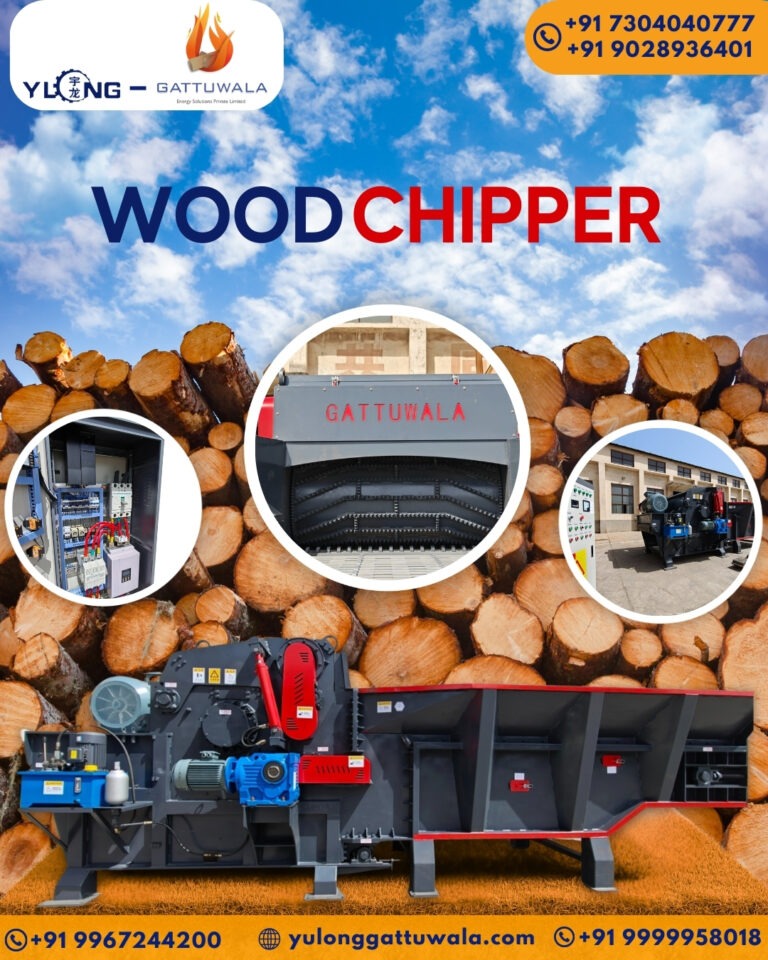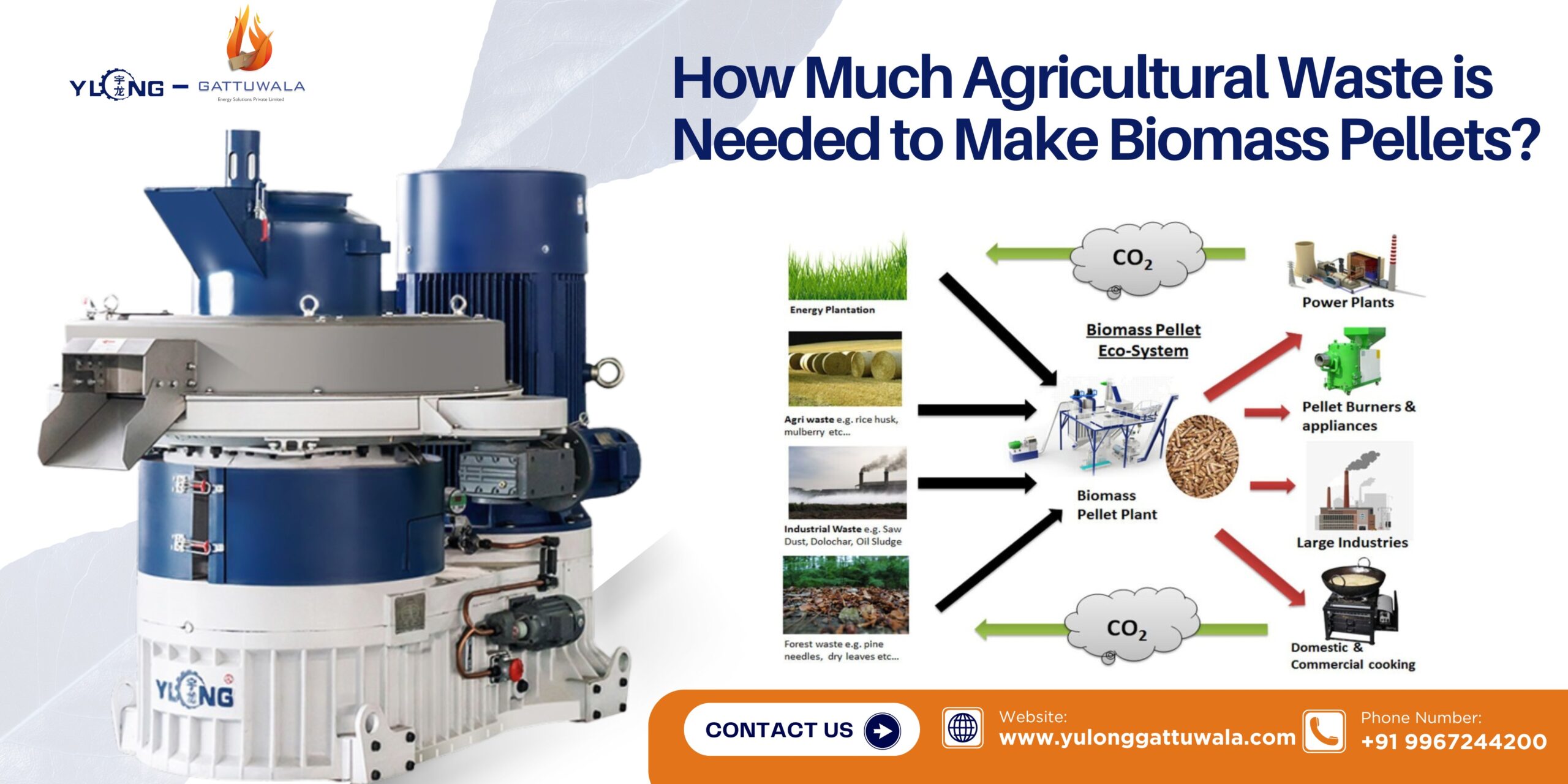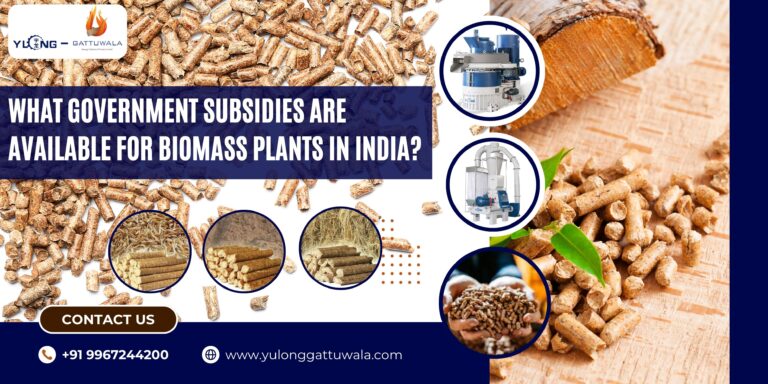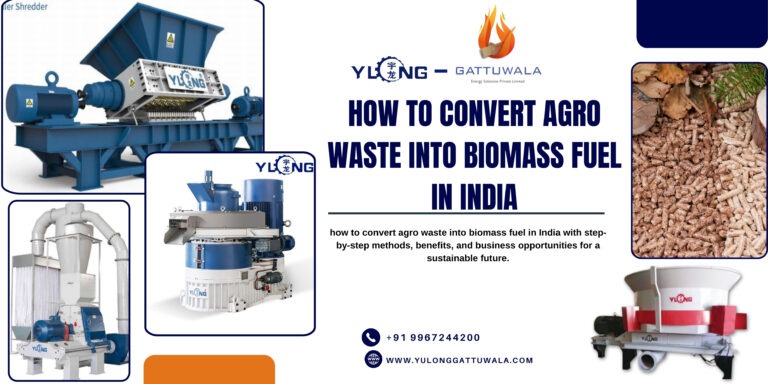- August 19, 2025

Agricultural waste is one of the most abundant and underutilized resources in India. Every year, farmers produce millions of tonnes of crop residues such as rice husk, sugarcane bagasse, cotton stalks, wheat straw, and corn cobs. Traditionally, this waste was either burned in fields or left to rot, causing severe air pollution and contributing to greenhouse gas emissions. But today, with the advancement of biomass technology, this waste can be transformed into biomass pellets — a sustainable and eco-friendly alternative to fossil fuels.
One of the most common questions farmers and industries ask is: How much agricultural waste is needed to make biomass pellets? Let’s break it down.
The Basics of Pellet Production
Biomass pellets are small, cylindrical fuel blocks produced by compressing agro waste under high pressure using a pellet machine. No chemical binders are required because natural lignin in the crop residue acts as a glue.
On average:
• 1 tonne of raw agro waste = 850–950 kg of biomass pellets
• The exact yield depends on the moisture content, density, and type of material.
For example:
• Rice husk yields about 900 kg pellets per tonne.
• Sugarcane bagasse gives around 850 kg pellets per tonne.
• Hardwood sawdust and cotton stalks may even exceed 950 kg per tonne due to higher density.
Daily and Monthly Requirements for a Pellet Plant
If you plan to run a small-scale pellet plant (say 1 tonne per hour capacity), here’s what you need:
• Raw material needed per hour: 1.1–1.2 tonnes of agro waste
• Per day (8 hours): 8.5–10 tonnes of agro waste
• Per month (25 working days): 200–250 tonnes of agro waste
Larger plants of 3–5 TPH (tonnes per hour) will naturally require three to five times more feedstock. This highlights why sourcing a steady supply of agricultural waste is crucial before setting up a pellet plant.
Factors Affecting Raw Material Requirement
- Moisture Content – Ideal moisture is 10–15%. If higher, drying is required, which increases energy use.
- Type of Agro Waste – Lighter residues like straw need more volume compared to dense husk or wood chips.
- Pellet Machine Efficiency – Advanced machines like Yulong-Gattuwala pelletizers ensure higher yield and lower wastage.
Why Farmers Should Care
Turning agro waste into pellets solves multiple challenges:
• Eliminates stubble burning and pollution.
• Provides farmers with additional income from waste.
• Reduces dependency on coal and LPG in rural industries.
• Supports India’s renewable energy mission.
To answer the main question: you need about 1.1 tonnes of agricultural waste to produce 1 tonne of biomass pellets. For a continuous pellet plant, ensure a reliable monthly supply based on your plant’s capacity.
With India generating more than 500 million tonnes of agro waste annually, there is immense potential to turn this surplus into green energy. Companies like Yulong-Gattuwala are already leading the way, offering advanced pellet machines and turnkey solutions to farmers and entrepreneurs.
Investing in biomass pellets is not just about fuel — it’s about building a cleaner and more sustainable future.
Biomass is no longer a by-product—it’s the future of energy. And the government is ensuring that future arrives faster.
📞 Interested in setting up a biomass pellet plant in India? Contact Gattuwala Energy for expert consultation, equipment, and government subsidy support.




